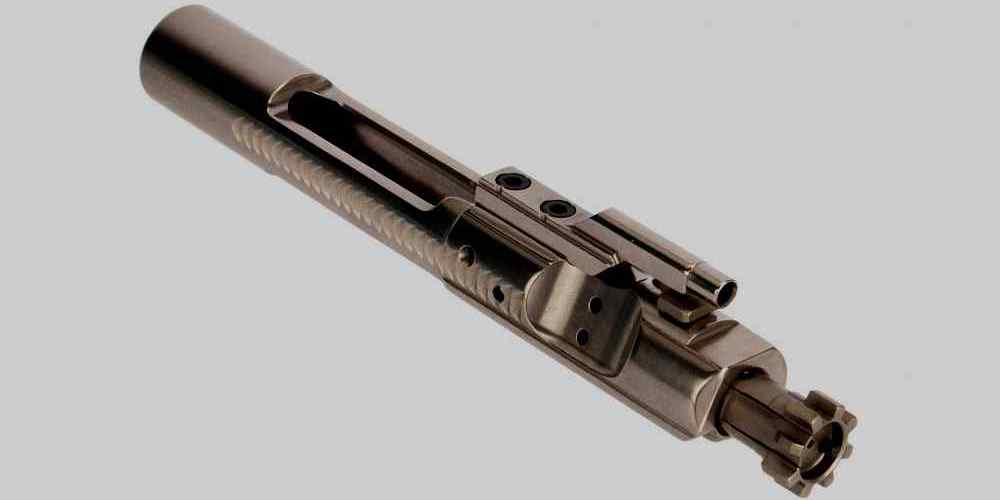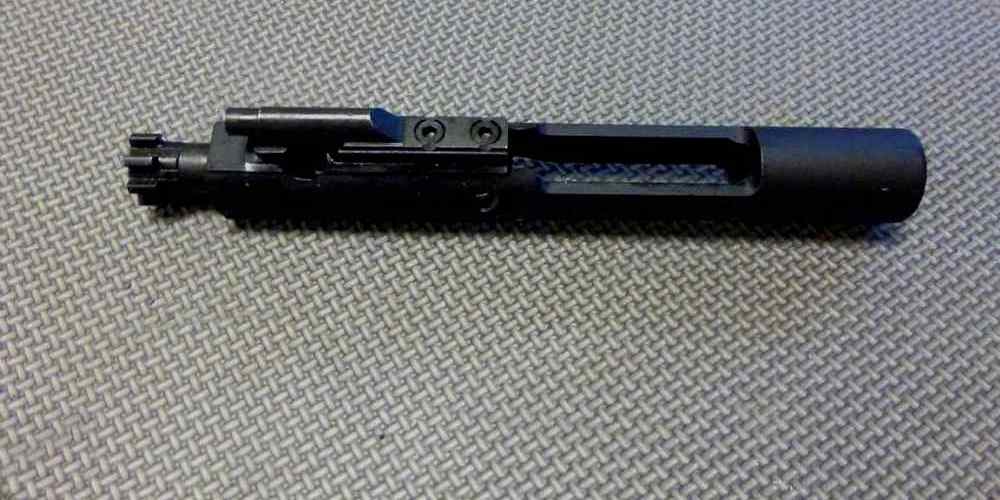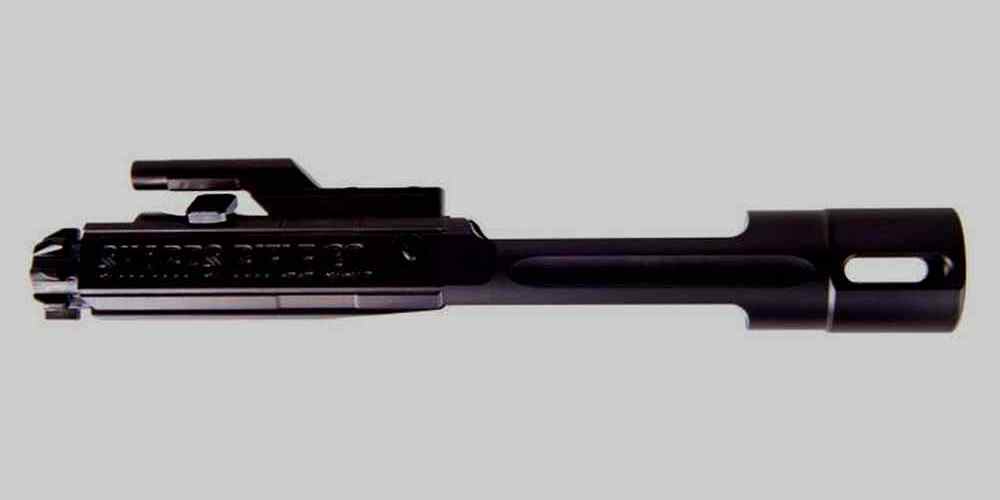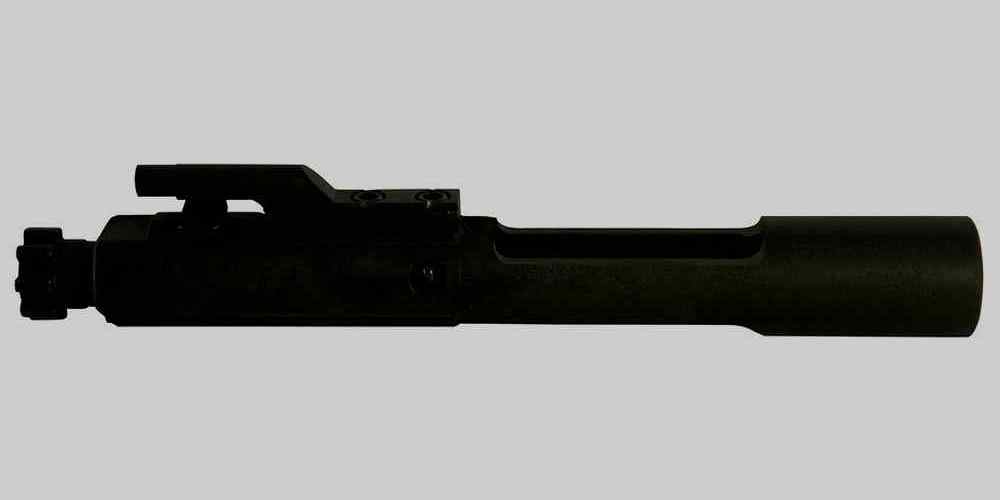“From military innovation to civilian staple, tracing the journey of the AR15 BCG.”
Development of the AR15 BCG
The AR15 Bolt Carrier Group (BCG) has a rich history that dates back to the 1950s when Eugene Stoner first designed the AR-10 rifle. Stoner’s innovative design revolutionized the firearms industry, and the AR-15 BCG played a crucial role in the success of the AR platform.
The original AR-10 BCG was a full-auto design that featured a one-piece bolt carrier with a forward assist. This design was later modified for the AR-15, which was adopted by the U.S. military in the 1960s as the M16 rifle. The AR-15 BCG underwent several changes over the years to improve reliability and performance.
One of the most significant developments in the evolution of the AR15 BCG was the introduction of the chrome-lined BCG in the 1970s. This innovation helped to reduce friction and wear on the BCG, making it more durable and reliable. The chrome lining also made the BCG easier to clean and maintain, which was a significant advantage for military and law enforcement users.
In the 1980s, the AR15 BCG saw further improvements with the introduction of the M16A2 rifle. This new model featured a heavier BCG with a longer dwell time, which helped to improve the rifle’s accuracy and reliability. The M16A2 BCG also included a forward assist, which allowed the shooter to manually chamber a round in case of a malfunction.
The 1990s saw the introduction of the M4 carbine, which featured a shorter barrel and collapsible stock. The M4 BCG was modified to accommodate the shorter barrel length, and it also included a heavier buffer to help reduce recoil. These changes made the M4 carbine more compact and maneuverable, making it a popular choice for military and law enforcement users.
In recent years, the AR15 BCG has continued to evolve with the introduction of new materials and coatings. One of the most significant developments has been the use of nickel boron and nitride coatings, which provide increased lubricity and corrosion resistance. These coatings help to reduce friction and wear on the BCG, making it more reliable and durable.
Another recent innovation in the AR15 BCG is the use of lightweight materials such as titanium and aluminum. These materials help to reduce the overall weight of the BCG, making the rifle more comfortable to carry and shoot for extended periods. Lightweight BCGs are also less prone to heat buildup, which can help to improve the rifle’s reliability in high-volume shooting situations.
Overall, the AR15 BCG has come a long way since its inception in the 1950s. Through continuous innovation and improvement, the AR15 BCG has become one of the most reliable and versatile bolt carrier groups on the market. Whether you are a military, law enforcement, or civilian shooter, the AR15 BCG is a critical component of the AR platform that continues to set the standard for modern firearms design.

Military Adoption of the AR15 BCG
The AR15 Bolt Carrier Group (BCG) has a long and storied history that dates back to its adoption by the military. The BCG is a critical component of the AR15 rifle, responsible for cycling the weapon and chambering new rounds. Its design has evolved over the years to meet the changing needs of the military and civilian markets.
The military first adopted the AR15 BCG in the 1960s when the rifle was introduced as the M16. The original BCG design featured a full-auto profile, allowing the rifle to fire in both semi-automatic and fully automatic modes. This design was well-suited for military applications, providing soldiers with a versatile weapon that could adapt to different combat scenarios.
As the military continued to use the AR15 platform, the BCG underwent several changes to improve reliability and performance. One of the most significant advancements was the introduction of the chrome-lined BCG, which offered increased durability and corrosion resistance. This upgrade was particularly important for soldiers operating in harsh environments, where their rifles were exposed to sand, dirt, and moisture.
In addition to the chrome-lined BCG, the military also adopted other enhancements to the AR15 platform, such as improved extractor designs and enhanced bolt materials. These upgrades helped to address common issues with the original BCG, such as extraction failures and bolt breakage. By continually refining the design of the BCG, the military was able to ensure that the AR15 remained a reliable and effective weapon for soldiers in the field.
The military’s adoption of the AR15 BCG also had a significant impact on the civilian market. As surplus M16 rifles became available to the public, gun enthusiasts began to experiment with building their own AR15 rifles using military-spec components. This led to a growing demand for AR15 BCGs that were compatible with both military and civilian rifles.
In response to this demand, manufacturers began producing AR15 BCGs that were designed to military specifications. These BCGs featured the same chrome-lined construction and enhanced extractor designs as their military counterparts, ensuring that civilian shooters could enjoy the same level of reliability and performance. This trend continues today, with many manufacturers offering AR15 BCGs that are virtually identical to those used by the military.
Overall, the military’s adoption of the AR15 BCG has played a crucial role in shaping the evolution of the platform. By continually refining the design of the BCG and incorporating new technologies, the military has ensured that the AR15 remains a cutting-edge weapon system. This legacy continues to influence the civilian market, where shooters can benefit from the same advancements that have made the AR15 a staple of military arsenals around the world.
Improvements and Modifications to the AR15 BCG
The AR15 Bolt Carrier Group (BCG) has undergone numerous improvements and modifications over the years, making it one of the most reliable and versatile components of the AR15 platform. From its humble beginnings as a simple bolt carrier group in the early 1960s to the highly refined and specialized BCGs available today, the evolution of the AR15 BCG is a testament to the ingenuity and innovation of firearms designers and manufacturers.
One of the earliest improvements to the AR15 BCG was the addition of a forward assist feature, which allowed shooters to manually push the bolt into battery in the event of a malfunction. This simple yet effective modification greatly enhanced the reliability of the AR15 platform, especially in adverse conditions or high-stress situations.
As the AR15 platform gained popularity among civilian shooters and military forces around the world, manufacturers began experimenting with different materials and coatings to improve the durability and performance of the BCG. One of the most significant advancements in this regard was the introduction of nickel boron and nitride coatings, which provide a slick and corrosion-resistant surface that reduces friction and wear on the BCG components.
In addition to coatings, manufacturers also began incorporating lightweight materials such as titanium and aluminum into the construction of the AR15 BCG to reduce weight and improve the overall balance and handling of the rifle. These lightweight BCGs are particularly popular among competition shooters and hunters who value mobility and maneuverability in their firearms.
Another important modification to the AR15 BCG was the introduction of adjustable gas key designs, which allow shooters to fine-tune the gas system of their rifle for optimal performance with a wide range of ammunition types. By adjusting the amount of gas that enters the BCG during the firing cycle, shooters can reduce recoil, improve reliability, and extend the service life of their rifle.
In recent years, manufacturers have also begun incorporating enhanced features such as dual ejectors, improved extractor designs, and enhanced bolt materials into their AR15 BCGs to further enhance their reliability and performance. These advanced BCGs are designed to withstand high round counts, harsh environmental conditions, and extended periods of use without sacrificing accuracy or reliability.
Overall, the history and evolution of the AR15 BCG is a testament to the ongoing commitment of firearms designers and manufacturers to improve the performance and reliability of the AR15 platform. From simple bolt carrier groups to highly specialized and advanced BCGs, the AR15 BCG has come a long way since its inception in the early 1960s.
As shooters continue to push the limits of the AR15 platform and demand more from their firearms, we can expect to see even more improvements and modifications to the AR15 BCG in the years to come. Whether you are a competitive shooter, a hunter, or a military operator, the AR15 BCG is an essential component of your rifle that will continue to evolve and improve to meet the demands of modern shooters.
Impact of the AR15 BCG on Firearms Industry
The AR15 Bolt Carrier Group (BCG) has played a significant role in the evolution of firearms technology over the years. Originally designed for military use, the AR15 BCG has become a staple in the civilian market as well. Its impact on the firearms industry cannot be understated, as it has influenced the design of countless rifles and carbines.
The history of the AR15 BCG dates back to the 1950s when Eugene Stoner developed the AR-10 rifle for the military. The AR-10 featured a direct impingement gas system and a rotating bolt design, which would later be refined and improved upon in the AR15. The AR15 BCG was designed to be lightweight, durable, and reliable, making it ideal for military use.
As the AR15 gained popularity in the civilian market, manufacturers began to experiment with different materials and coatings for the BCG. One of the most significant advancements in BCG technology was the introduction of nickel boron coatings, which provide increased lubricity and corrosion resistance. This innovation has become standard in many modern AR15 BCGs, further enhancing their performance and longevity.
Another key development in the evolution of the AR15 BCG was the introduction of adjustable gas blocks. These allow shooters to fine-tune the gas system to their specific ammunition and shooting conditions, resulting in improved reliability and reduced recoil. This level of customization has made the AR15 BCG even more versatile and adaptable to a wide range of shooting applications.
In recent years, the AR15 BCG has continued to evolve with the introduction of enhanced bolt designs and materials. For example, some manufacturers have begun using Carpenter 158 steel for their bolts, which offers increased strength and durability compared to traditional mil-spec bolts. Additionally, lightweight bolt carrier designs have become popular among competitive shooters, as they reduce reciprocating mass and improve cycling speed.
The impact of the AR15 BCG on the firearms industry can be seen in the widespread adoption of the platform by military, law enforcement, and civilian shooters alike. Its reliability, modularity, and ease of customization have made it a favorite among gun enthusiasts of all skill levels. The AR15 BCG has also influenced the design of other firearms, such as the AR10, AR9, and AR47, which share many of the same components and features.
In conclusion, the AR15 BCG has had a profound impact on the firearms industry since its inception. From its origins in military service to its widespread use in civilian applications, the AR15 BCG has proven to be a versatile and reliable component of the AR15 platform. As technology continues to advance, we can expect to see further innovations in BCG design that will further enhance the performance and capabilities of this iconic firearm.
Future Trends in AR15 BCG Design
The AR15 Bolt Carrier Group (BCG) has undergone significant changes and improvements since its inception in the 1950s. Originally designed for military use, the AR15 BCG has become a staple in the civilian market, with countless variations and upgrades available to consumers. In this article, we will explore the history and evolution of the AR15 BCG, as well as discuss future trends in BCG design.
The AR15 BCG was first introduced in the late 1950s as part of the Armalite AR-15 rifle. The original BCG was a full-auto capable, chrome-plated bolt carrier group that featured a forward assist and a dust cover. Over the years, the design of the AR15 BCG has evolved to meet the changing needs of shooters and advances in technology.
One of the most significant advancements in AR15 BCG design came in the form of the introduction of the M16 rifle in the 1960s. The M16 featured a modified BCG that included a heavier bolt carrier and a redesigned bolt that was more reliable and durable than its predecessor. These improvements helped to address some of the reliability issues that plagued the early AR15 rifles.
In the 1980s, the military introduced the M16A2 rifle, which featured a new BCG design that included a heavier buffer and a longer buffer tube. These changes helped to reduce recoil and improve the overall handling of the rifle. The M16A2 BCG also featured a new firing pin design that was more reliable and less prone to breakage.
In the 1990s, the civilian market saw a surge in popularity of the AR15 platform, leading to a proliferation of aftermarket BCGs. These aftermarket BCGs offered shooters a wide range of options, including lightweight BCGs for competition shooting, nickel boron-coated BCGs for improved lubricity, and adjustable gas key BCGs for fine-tuning the rifle’s gas system.
Today, the AR15 BCG market is more diverse than ever, with manufacturers offering a wide range of options to suit every shooter’s needs. Some of the latest trends in AR15 BCG design include dual ejectors for improved reliability, enhanced bolt materials for increased durability, and improved coatings for better corrosion resistance.
One of the most exciting developments in AR15 BCG design is the advent of the dual-ejector BCG. This innovative design features two ejectors instead of the traditional single ejector, which helps to ensure reliable ejection of spent casings in all conditions. Dual-ejector BCGs are becoming increasingly popular among shooters who demand the highest level of reliability from their rifles.
Another trend in AR15 BCG design is the use of enhanced bolt materials, such as Carpenter 158 steel or 9310 steel. These materials offer increased strength and durability compared to traditional bolt materials, making them ideal for high-volume shooters or those who put their rifles through rigorous use.
Coatings have also played a significant role in the evolution of AR15 BCG design. Nickel boron and nitride coatings offer improved lubricity and corrosion resistance, making them ideal for shooters who want a low-maintenance BCG that will perform reliably in any conditions.
In conclusion, the AR15 BCG has come a long way since its inception in the 1950s. With advancements in materials, coatings, and design, today’s AR15 BCGs offer shooters a level of performance and reliability that was unheard of just a few decades ago. As technology continues to evolve, we can expect to see even more innovations in AR15 BCG design that will further enhance the performance of this iconic rifle platform.








